It seems incredible, but in the 114-year existence of the FIA (under its various guises), world motorsport’s governing body has convened just six global sport conferences – all held since 2013, saliently starting towards the end of Jean Todt’s first presidential term.
The first FIA Sport Conference, held in Goodwood ahead of the Festival of Speed weekend, focused on the development and promotion of (all) motorsports in the FIA’s various zones – both topics that featured prominently in Todt’s re-election manifesto that year. It was no surprise that member clubs bought into his vision, and the Frenchman was returned unopposed that October.
The next edition, convened in Munich, focussed on development and educational opportunities for FIA member clubs. The conference also saw the introduction of the MotorEx forum, designed to provide a commercial platform for motorsport suppliers.
In 2015 delegates visited Mexico ahead of the country’s return to the F1 calendar, with the theme “Make it fast, make it safe, make it for fans”. The focus was on the benefits of structured programmes for ASNs (National Sporting Authorities, as member clubs are referred to), homing in on fast but safe motorsport.The next conference, titled “Passion and Innovation: Past, Present and Future of Motorsport”, was hosted in June 2016 in halls of Lingotto – the former Fiat factory that gained legendary status as the scene of the roof top car chase in The Italian Job.
“We designed this conference as a platform for exchanges, to enable people to meet and set up innovative projects as a result of these discussions,” Todt said in his opening address. “For the FIA it is important to ensure that motorsport is accessible to everyone, in all parts of the world.”
Therein lies the rationale behind the conferences: To ensure that motorsport becomes increasingly democratic; that participation is not restricted only to the wealthy, and that any fan with a car can find enjoyment through sporting activities, whether as competitor, administrator or team member.
Last year’s edition was hosted in Geneva under the theme “Progress and Direction Together Through a Decade of Change”, and preceded Todt’s third (and last) presidential mandate. The conference built on the building blocks of previous editions, and set the scene for this year’s congress, hosted in the Conrad Hotel in Manila from 4 to 6 June, with the second World Motor Sport Council meeting of the year slated for 7 June.
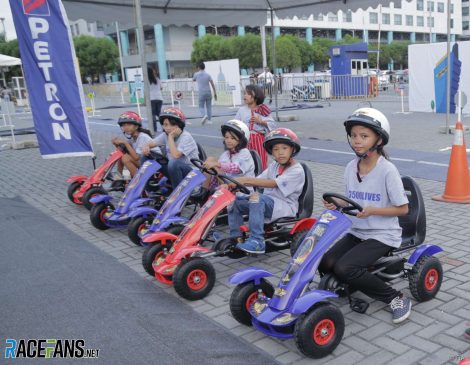 Themed “Empowering the Future: Unlocking Motor Sport’s Potential”, the conference was opened by Todt, who said in his address that one of the primary for the FIA and its global club network is to “Provide as many people as possible with access to motor sport.
Themed “Empowering the Future: Unlocking Motor Sport’s Potential”, the conference was opened by Todt, who said in his address that one of the primary for the FIA and its global club network is to “Provide as many people as possible with access to motor sport.
“One of the key challenges is how to engage with younger generations, and inspire them to get involved in our sport, both as fans and competitors.”
“E-Karting represents not only a new opportunity in terms of motor sport development, it also demonstrates that the world is changing, and that we need to be a change-leader. E-Karting will be demonstrated at the Youth Olympic Games later this year in Buenos Aires – this marks a significant step for the FIA and its recognition by the International Olympic Committee in January 2012.”
Indeed, as FIA Secretary-General for Sport Peter Bayer subsequently told RaceFans, the aim is to have E-Karting recognised as a Youth Olympic sport in 2022. The Austrian pointed to skateboarding, which was trialled by the Youth Olympics before incorporation in the Olympic Games. Bayer knows of what he speaks: Before joining the FIA he was CEO of the Youth Olympics.
Advert | Become a RaceFans supporter and
The FIA recognises that although karting is the most democratic form of motorsport, the staircase is meritocratic from karting through F3 to F1 – indeed, one of Todt’s most important achievements has been the introduction of a structured single-seater ladder from F4 through F3 and F2 to F1, with similar ladders for rally (R4-R1), endurance racing (P4-1), even touring cars (T4-1), and eventually drifting (D4-1).
“The FIA and [commercial rights holder] Formula 1 [Management] work together in achieving the same strategic goals, for more spectacle and competition between teams, better safety and more technological innovation,” he said during his address.
“For the continued health of [F1] we are discussing governance, cost management and technical simplification. To this end, we are conducting an in-depth dialogue with the teams and power unit suppliers already involved and potentially interested in joining F1.
“After officially revealing the new FIA Formula E Gen-2 car during the Geneva Motor Show, the next Formula E season will see cars with double the battery life… technological advancement that will ultimately benefit all motorists.”
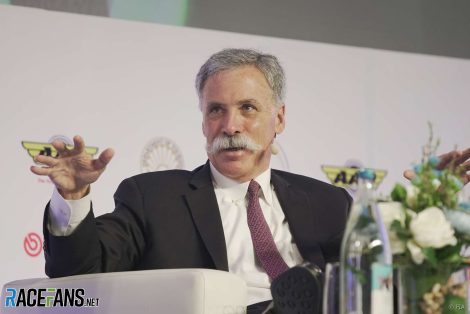 During his keynote address F1 CEO Chase Carey reiterated FOM’s commitment to the single-seater ladder, saying, “We [with the FIA] actually have a great partnership. We’re obviously learning to work together…I think we’re finding we very much have a shared vision of where we want to go, and certainly Formula 2 and Formula 3 was part of that.
During his keynote address F1 CEO Chase Carey reiterated FOM’s commitment to the single-seater ladder, saying, “We [with the FIA] actually have a great partnership. We’re obviously learning to work together…I think we’re finding we very much have a shared vision of where we want to go, and certainly Formula 2 and Formula 3 was part of that.
“We’ve talked about the pyramid with Formula 1 being the pinnacle, but having more of a structure in place that we can help grow and bring young drivers along, develop drivers in parts of the world like Asia, have a structure that they can move up and have fans able to follow it so it’s not just a development path for drivers, but it’s also a path fans can engage with, and be excited about where young drivers are coming from.”
Carey made no secret of the fact that FOM is eyeing additional races in Asia, particularly Vietnam and a second grand prix in China, but, crucially, stressed that any new venues would need to deliver exciting racing. Thus the money-grabbing-regardless-of-impact-on-F1 strategy of his predecessor has (hopefully) been consigned to a bin marked “obsolete”.
After Carey’s address, a panel consisting of the American, Malaysia’s former F1 driver Alex Yoong, Philippine F3 driver – and Monaco GP3 race winner – Marlon Stöckinger and Asia F3 promoter Davide de Gobbi spoke of the challenges (and potential) of introducing regional F3 championships as per the “ladder” structure. Their points apply equally to Asia, the Americas, Africa or other emerging regions.
Advert | Become a RaceFans supporter and
 In-keeping with standards set by other conferences, dinner provided a superb opportunity of networking with club officials from across the globe over delicious local fare. The Philippines consists of over 7,000 islands, and it seems each has its own specialities so many dishes were served by Barbara’s Heritage Restaurant, while red eyes aplenty the following morning attested to much enjoyment, although most blamed jet lag…
In-keeping with standards set by other conferences, dinner provided a superb opportunity of networking with club officials from across the globe over delicious local fare. The Philippines consists of over 7,000 islands, and it seems each has its own specialities so many dishes were served by Barbara’s Heritage Restaurant, while red eyes aplenty the following morning attested to much enjoyment, although most blamed jet lag…
Day two opened with a Plenary on “Attracting the Next Generation”, with 11-time grand prix winner-turned CIK president Felipe Massa the key speaker. The Brazilian is well versed in the struggles facing regular guys making it into F1, and related the story of how problems in his father’s business meant there was no funding for the then-14-year-old’s karting activities.
“The time I spent most in my career was finding sponsors – it was the thing I was speaking about most every day, because I didn’t have the money to race. All I spoke about every day was finding sponsors to race – with the mentality that my dream was to arrive in Formula 1.”
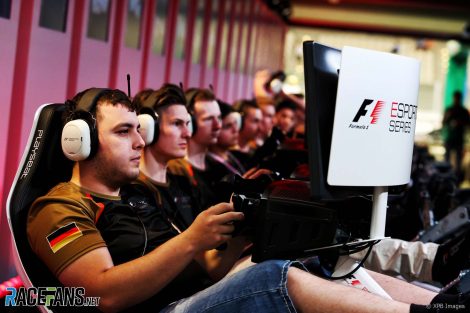 Thus the FIA (and F1) is increasingly embracing e-Sports as a cost-effective entry platform, and invited former Formula BMW and Formula 3 race winner Rupert Svendsen-Cook, who turned to e-Sports team management once his race funding ran out, to address the conference.
Thus the FIA (and F1) is increasingly embracing e-Sports as a cost-effective entry platform, and invited former Formula BMW and Formula 3 race winner Rupert Svendsen-Cook, who turned to e-Sports team management once his race funding ran out, to address the conference.
“The cost barriers to entry at the junior level are the biggest stumbling block to engaging the young people to get involved in the sport,” said the founder of the Veloce eSports team, who now manages some of the biggest stars in the business – and it has become big business.
“eSports is a very good solution for a lot of the problems. It’s true there’s no better school than karting – I did eight years of karting – it’s great, it taught me everything. It’s the ultimate education, but it has very different price points to other opportunities that can still give you a lot of the same tools as eSports.”
He trotted out some impressive statistics: “As of today, eSports is the fastest growing sport in the world. The participation number globally right now is around 200 million people and growing – and the global audience is a staggering 380 million, and growing. Pretty astonishing numbers…
“We’re engaging a millennial audience and a fan base which is crucial to the future of our sport. It’s realistic to say that the next generation of drivers will graduate through racing eSports – the opportunities are huge.”
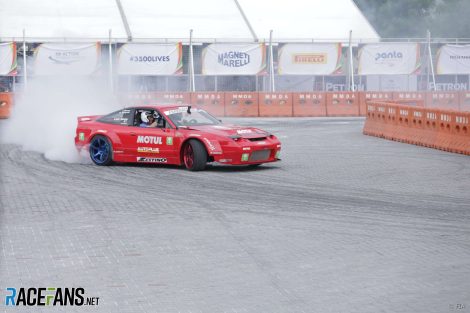 Equally, drifting gained millions of fans across the world. Marek Nawarecki, FIA Manager for Circuit Racing, highlighted that drifting is ideally placed as an entry-level sport – standard production cars suffice at D4 level – while the FIA’s Drifting pyramid provides clear progression. Indeed, during the conference the formation of the FIA Drifting Commission was announced.
Equally, drifting gained millions of fans across the world. Marek Nawarecki, FIA Manager for Circuit Racing, highlighted that drifting is ideally placed as an entry-level sport – standard production cars suffice at D4 level – while the FIA’s Drifting pyramid provides clear progression. Indeed, during the conference the formation of the FIA Drifting Commission was announced.
Also on stage was Rodi Basso, Motorsports Director for McLaren Applied Technologies, who spoke about the data generated by motorsport, and how that could be applied to attract new fans: “As an engineer I’m very passionate and interested in motor sport technology – I’m still fascinated by how much technology can change and improve people’s lives,” said the former F1 engineer, who did his internship at NASA.
“This conference is about unlocking the potential of motor sport, and it has a huge potential – most of it in data. One of the unique aspects of our sport is the amount of data that is available – consider that a [F1] race weekend generates something like 100 terabytes of data across all F1 cars.
“Using new data technologies we can definitely improve the show, let data tell the story, and attract a new generation that is demanding something different.”
Herman’s Tilke’s presentation was very much in line with his thoughts as expressed in his recent interview for RaceFans. After lunch delegated were treated to some live action, with a drifting display as well as laps in the Cross Car – effectively an off-road kart aimed at grassroots motorsport. The concept means that a variety of increasingly powerful engines can be fitted to the same vehicle as the youngster becomes more proficient.
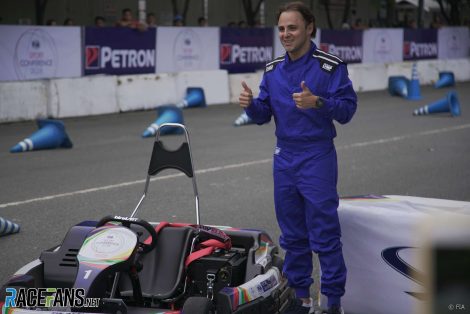 That evening we were hosted by the Manila Polo Club, an establishment every bit as genteel as the name implies, with the menu again doing Philippines hospitality (very) proud. One of the joys of the conference is meeting and mixing with like-minded individuals, who simply love all motorsport activities and strive for the welfare of the sport – and the evening provided such opportunities in abundance.
That evening we were hosted by the Manila Polo Club, an establishment every bit as genteel as the name implies, with the menu again doing Philippines hospitality (very) proud. One of the joys of the conference is meeting and mixing with like-minded individuals, who simply love all motorsport activities and strive for the welfare of the sport – and the evening provided such opportunities in abundance.
The final day’s plenary was entitled “Safeguarding the sport – the future of technology”, and saw Mehul Kapadia, Managing Director of F1 Business at Tata Communications, outline the shifts in broadcast technology for F1, and how other genre could benefit in future.
“The journey of the last six years has been the journey of the digital transformation of Formula One,” he said. “Preparing the foundation for high-quality transmission through 4K, ultra-HD, doing things like live OTT [Over-The-Top]…Having this ability to take personalised experiences to different places, is where OTT platforms can help.
“The scalability of these is that you can do it on a global level, you can do it at a regional level…you’re really breaking down barriers of geography by, I don’t want to say bypassing broadcasters, but being able to reach customers directly.”
Also on stage was Burkhard Goeschel, formerly BMW board member for technology and now president of the FIA’s Electric and New Energy Commission, who spoke about the applications that the commission is developing for electric vehicles.
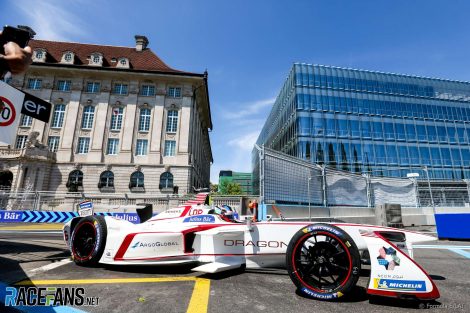 “We’re talking about electrification everywhere…that’s the main development issue for the automotive industry,” Goeschel stated. “For example, Formula E was an outcome of our activities, and now we are initiating further steps, like e-Rallycross or e-Karting. We are also building a technology roadmap for the future.
“We’re talking about electrification everywhere…that’s the main development issue for the automotive industry,” Goeschel stated. “For example, Formula E was an outcome of our activities, and now we are initiating further steps, like e-Rallycross or e-Karting. We are also building a technology roadmap for the future.
“In Formula E we have a clear roadmap for how to grow and how to go forward, and which kind of technology to apply in batteries, charging systems, semi-conductors, and everything like that. A future issue that we are considering is Fuel Cell racing – when should it come, when is it mature enough to go into motor sport?
“I see opportunities for long distance racing…if we are stepping across to zero emissions in motor sport, maybe for 24 hours racing or something like that, then fuel cells, in my opinion, become interesting. It’s future technology, the industry is working on it, so why not…[the FIA]?”
The final sessions included an outline of the objectives of the newly-founded FIA Disability and Accessibility Commission – of which more later – plus environmental accreditation processes and revised helmet standards.
Todt brought proceedings to a close. “We are moving, he said. “We will keep going, developing motor sport, being more ambitious in all the regions. It’s very important to progress together, and to convey the same values – without strong values, we cannot have a strong organisation.
“Fresh blood is absolutely essential – we have a community which is developing, and it can only develop by having young people… We have a lot of new members of commissions, new presidents of commissions who are young, and that’s very important to secure the future of the organisation.”
There is no doubt that the global motorsport landscape is changing – whether for better or worse is not, though, the relevant question, for the demands of a changing environment and shifting demographics means the sport has zero say in the matter. It needs to adapt or face extinction. The FIA recognises that fact, and on the basis of the presentations in Manila, is well placed to face future challenges.
Grassroots motorsports will never be followed as eagerly as the spectacular exploits of the F1 circus. But the fact is world champions are grown, not born – and took their first steps in fledgling categories. Without those there would simply be no F1, certainly not as it is today.
As it is with granny’s wisdom about finances, so it is with our sport: look after the pennies, and the pounds look after themselves. The piggy bank is the FIA.
Follow Dieter on Twitter: @RacingLines
Go ad-free for just £1 per month
>> Find out more and sign up
RacingLines
- The year of sprints, ‘the show’ – and rising stock: A political review of the 2021 F1 season
- The problems of perception the FIA must address after the Abu Dhabi row
- Why the budget cap could be F1’s next battleground between Mercedes and Red Bull
- Todt defied expectations as president – now he plans to “disappear” from FIA
- Sir Frank Williams: A personal appreciation of a true racer




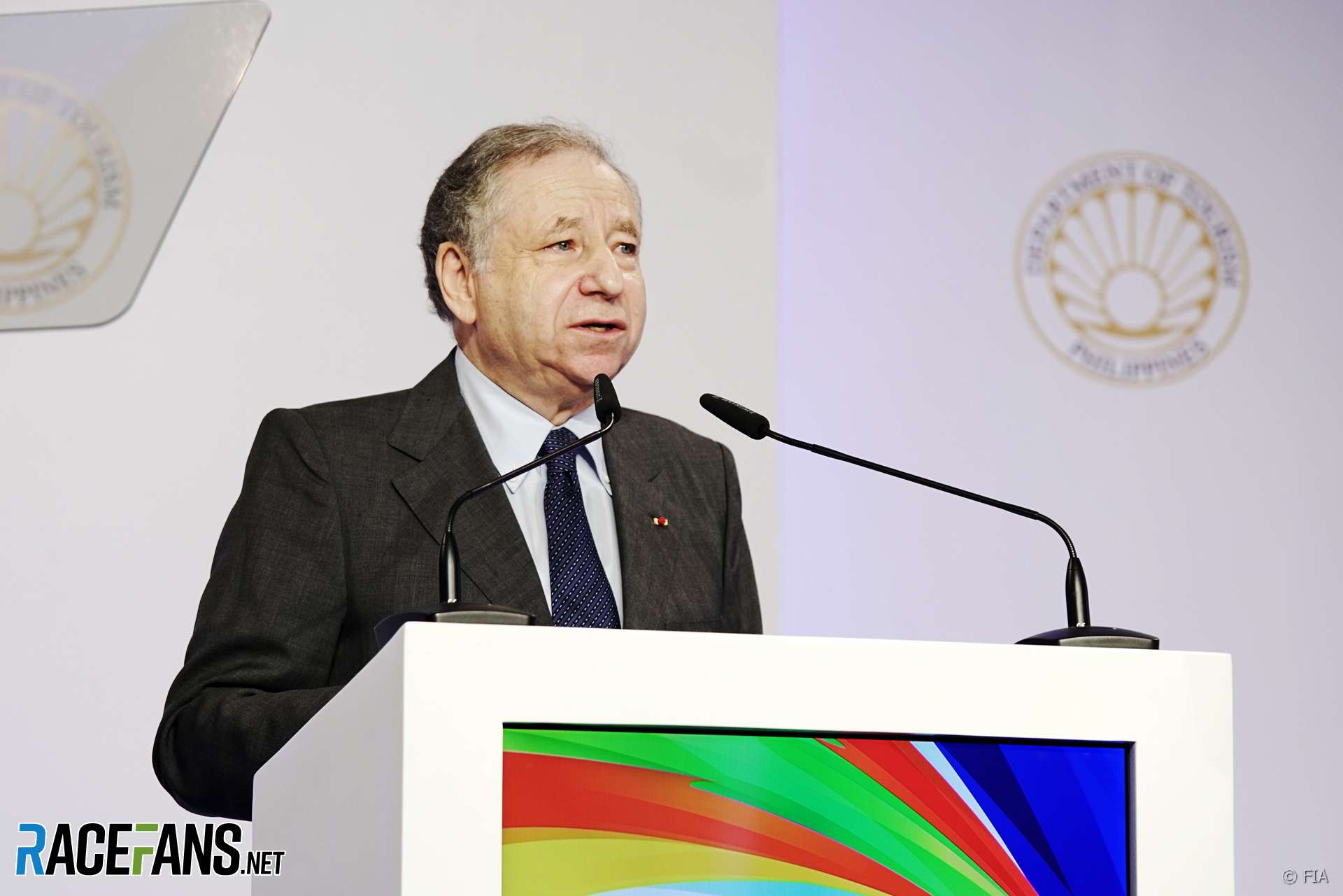
ColdFly (@)
13th June 2018, 12:30
Thanks @dieterrencken, interesting RacingLines article as usual.
Do you think Formula E will get the multiple steps as well: E4-1?
Or should we expect an E-version in all series: Rallye RE; Endurance PE (‘long distance racing’ as mentioned by Burkhard Goesche; Touring TE; Drifting DE?
Dieter Rencken (@dieterrencken)
13th June 2018, 12:57
Good question, and I’m sure in time there will be an E-ladder, but the important thing is to build FE into the premier electric championship so that lower categories have something to aim for. But it is starting with e-karting…
Nitzo (@webtel)
13th June 2018, 13:12
So many discussions surrounding the sport. So few surrounding how to get next-gen fans interested.
Let’s hope the story is likable and easy to understand for the new fan.
Alain
13th June 2018, 13:31
If the racing is close and exciting the fans will be there.
ruliemaulana (@ruliemaulana)
13th June 2018, 22:11
It’s the right to boast as ‘the’ pinnacle of motorsport that draw fans to F1 not the close and exiting races. When the time came to FE to claim that, F1 would be in history channel…
Jeanrien (@jeanrien)
13th June 2018, 15:29
Sometimes I wonder if we are not looking at this the old way instead of realizing F1 might be reaching its end… Will F1 really be attractive to the next generation?
We expect to have self diving cars coming ‘soon’ and young people living in big cities are more inclined to not having their own car (using public transportation or shared cars instead).
The virtual reality world is growing fast and strong with more and more realism.
Isn’t more appealing for the very young people to be reaching virtually in a environnement designed to provide good racing, great immersion and a proper show? This would be affordable so that most could relate their performances to the pros and get inspired. All this being environnement friendly with no disturbance to others.
The long time F1 fan in me wants to believe F1 will exist for many years but I am getting a harder time every year to convince myself.
ColdFly (@)
13th June 2018, 16:34
Yet javelin is still an Olympic sport, @jeanrien.
Gary
13th June 2018, 18:23
Indeed, but Javelin and pole vault don’t require $2.0 billion of annual revenue (FOM, sponsors) for their existence.
Dieter Rencken (@dieterrencken)
13th June 2018, 18:45
Nor does e-karting at the Olympics, which is the whole point.
Jeanrien (@jeanrien)
13th June 2018, 21:12
@coldfly I din’t say it will disappear but you could argue that ‘javelin’ throwing was a lot more ‘popular’ or highly regarded when people were still fighting with spears. And it is now a niche, you have to try and get hooked through athletics camp, at school or whatever. Or really want to participate to the Olympics while living in a country where everyone is running and give it a try based on Youtube videos.
I am not sure that many kids would answer they want to become a F1 drivers if asked while it would have been a relatively popular answer when I was in elementary school. But they probably want to be the next Messi because they still play soccer during school breaks (some of them at least), and they want to become the next League of Legends superstar because they play at home and can relate easily to those.
I am not sure the decline in viewership is only due to bad cars/coverage/show/tyres, people’s interest is shifting and has always been. Probably best to keep core values of the sport and accept to have a reduced amount of viewers but committed to the sport instead of trying to reach the largest audience at the cost of becoming irrelevant to long time fans. And then get dropped by this ‘new’ but volatile audience after 2-3 years (at best) because the novelty tag wears off.
BigJoe
13th June 2018, 18:44
@jeanrien
That’s what I think. Add to what you’ve said, that most countries are in trillions of dollars of debt and motorsport gets more expensive by the year to both take part in and spectate. There will be a financial crash or ‘readjustment’ at some point and it’s going to hit major motorsports very hard.
You can buy pretty amazing race seat set-ups for virtual racing for the price of a top Kart engine $3000-3,500. You could spend $10,000 on a home simulation and not even feel guilty compared to the costs of Karting at a semi-serious level.
anon-e moss
14th June 2018, 19:05
Sports get popular in the same way music does. It matters not if you are best musician with the best band. What counts is getting people to see you and want to see you. Most people cannot play a musical instrument, they cannot sing but still they like music. Because it is available to all. Turn on the radio and you hear music. The intewebs are full of music. F1? locked behind paywalls. Entry level fee hundreds of dollars/pounds. No new blood will ever see F1 so F1 will die. Those involved, the teams and drivers, Liberty and the FIA will get rich. Every GP will resemble Monaco where the rich rub shoulders with the richer. When that generation gets too old and dies away there will be nobody left to fill their shoes. Nobody will know about F1 or even care. I prefer to watch new sports like Ninja Warrior(US) it’s free to air and a good spectacle that gets bigger every year. New spin-offs are created and the age limit of entry is lowered. People are queueing up to take part and its fun to watch. 10 years ago it was a handful of people attacking obstacles dodging dirty pools of water. Now it’s big, clean and getting bigger. The Ninjas are household names. I know it’s not motor sport but it’s growth is what Liberty should be trying to copy.
Dieter Rencken (@dieterrencken)
13th June 2018, 16:08
Eventually the car will go the way of the horse, which ceased being a mode of transport but was retained for sporting activities. That is why fostering motorsport at grassroots level is crucial – just as riding schools ensure that equestrian sports are still practiced.
We need to realise that ultimately F1 is a part of motorsport not THE motorsport. A major part, sure, but still a part.
Aleš Norský (@gpfacts)
13th June 2018, 17:28
Personally, I am not yet sold on e-racing…it is relatively old technology that, in spite of its image, does little for the environment because most electricity is still generated by burning fossil fuels…and will be for a while yet. If motorsport wanted to do something really cutting-edge, they should look at developing reliable and affordable hydrogen fuel cell. But that is just a side note. On the point of the amount of data being generated during F1 weekend…it seems to me that one really needs to be an engineer to find that exciting. Which is OK though, if motorsport is to attract more fans, they should offer as much information as possible and hopefully people will sort it out themselves…some get excited about how much energy is being generated by braking while others don’t care about that at all and instead look at historical statistics to get their fix. But the real key are and will be the drivers…if they do not offer any reason for people to like, follow and support them, the whole thing will sooner or later go down the drain.
BigJoe
13th June 2018, 20:26
@gpfacts
Motocross loses a lot of tracks as decades go by due to ever increasing stigma to the noise, Karting is always under srutiny. There is the possibility that EVs will mean more race meetings allowed due to lack of noise. More people can participate with access to more venues and it becomes more affordable as they’ll be cheaper to run too.
Look how Formula E lets almost any old person drive the cars, as it’s less likely expensive damage will be done to the motor and gearbox.
BasCB (@bascb)
13th June 2018, 20:56
Yes, I think Big Joe has a valid point that the noise alone could be the saviour of many local motorsport clubs because of the noise levels being significantly lower @gpfacts
Aleš Norský (@gpfacts)
13th June 2018, 23:13
Yet today the LOW noise of current engines is being presented as one of the things that are wrong with F1… :)
Dieter Rencken (@dieterrencken)
14th June 2018, 6:04
But not by younger generations, which is the whole point.
BasCB (@bascb)
14th June 2018, 13:00
Actually what I meant to say (maybe that was not clear enough?) is not even as much the noise for the fans, especially many younger ones (as @dieterrencken rightly mentions this is certainly a factor for finding NEW fans), including families with kids who won’t want their kids to get deaf from the noise @gpfacts
What I meant to say was, that one of the prime reasons why often local courses have to close or have trouble getting permits prolongued etc is that the neighbours – including those that cycle/go for a walk in the forest next door, but also those that live somewhat close to them, is the noise levels.
This is a huge factor limiting (for example) Zandvoort, it limits Spa as well, just like it limits the Red Bull Ring, I am pretty sure it is an issue in Austin, at Monza, certainly in Montreal too, as well as for having motorsport at many other potential locactions one could race at all kinds of steps of the ladder.
Nitzo (@webtel)
14th June 2018, 7:57
@bascb
If noise was an issue for the modern day sports fan, he wont turn up to a game of cricket of football in a stadium. Cars whizzing past you at amazing speeds are part of the spectacle. SPEED is the backbone of motorsport. Watching it on low volume is unimaginable.
As far as the new fan is concerned, i agree with @dieterrencken; noise is a non-issue.
As an experiment, i have started asking my colleagues and friends (only those who don’t watch/follow F1 or any other motorsport) some questions like –“why aren’t you interested in F1 ? what will make you follow/watch it ?”
Interesting answers so far…
BasCB (@bascb)
14th June 2018, 13:03
see my anwer above @webtel. You misunderstood me (and “big joe”) there.
This is about the surroundings, the people and organisations often objecting to having motorsport happen close to them (or anywhere) that almost always have noise as a huge reason to object to karting facilities, local motor cross ranges, not to mention larger events.
lee1
14th June 2018, 10:02
Hydrogen Fuel cells are terrible for cars. over 90% of hydrogen is currently created from steam reformation of methane which creates large levels of CO2. The process is also energy intensive and then the fuels cells are not massively efficient. At 60% they are better then an ICE but not close to the 90% of battery. They also have to have a battery anyway (although it is obviously smaller than a pure BEV). Then there are issues with storage. The tanks are bulky and are therefore not as easily placed as a battery or fuel tank.
It is far more efficient to simply charge the battery directly rather than go through all that faff with fuel cells and the source electricity to do either comes from the same place so if it batteries are being charged from fossil fuel plants then the energy needed to create hydrogen is also coming from fossil fuel plants. Battery EVs also can play around with the placement of the storage to give better dynamics. For instance even the Nissan Leaf (Not exactly a sports car) has the weight distribution of an F1 car along with a really low COG which gives it great handling for its type.
Despite your thoughts on the matter BEVs are doing a lot for the environment. They produce no tailpipe emissions which is great for peoples health and they simply get greener as the grid gets greener.
BasCB (@bascb)
14th June 2018, 13:12
With an efficiency of 60% the F1 hybrids (and the LMP hybrids) have that clearly beaten already!
But you cannot just present a 90% effictivity for batteries either though, because then you have to consider the whole manufacturing cycle – i.e. taking all the energy to make the car, the batterie (+replacement battery after 40k km) AND all the energy (coal plants operate at 30-45% efficiency in many cases) to make the energy over the live cycle of the vehicle with the energy to build the car, pump up and refine the fuel and get it into the cars too.
This currently is clearly better for battery powered cars when they are used for about 100.000 km compared to gasoline cars. If diesel is used for longer range, the balance lies at about 150k km in Europe if I remember correctly (but have a larger issue with NOx particles than gasoline and certainly than battery powered/hydrogene).
You’d have to do the same with the hydrogen cars off course.
I agree with you that unless we find a more efficient way to produce (and store) hydrogen, this is not a clearly better solution though. Ten again, remember that electricity cables can also have losses in the “transport” of up to 1/3 over longer ranges.
NS Biker (@rekibsn)
16th June 2018, 6:10
A couple of minor points. Some are geographically influenced.
In North America, most of the hydrogen produced for vehicle fueling is produced with small scale electrolysis plants. Yes you got that, use electricity to separate water in H2 and O2 (that gets vented) so you can run a fuel cell to produce electricity. Efficiency … don’t go there you won’t be impressed. The proponents will argue that you can run the electrolyzers off-peak and tie them into wind-solar etc. True, but at what cost.?
The larger users and producers will use the methane reformer for H2 production. Typically they would transport liquid H2. Trivial anecdote, the process to liquify the gas takes about 10% of the available energy. Leave it in the tank for a month …. hey.! Where did it go.??
Something that the world needs to come to grips with, Hydrogen, in this application is not a fuel. It is an energy storage system and not very good one. As Lee1 mentioned, skip the whole process and just charge the battery.
High voltage transmission lines are really quite efficient. A fully loaded line of 300 miles (500 km) would loose 5 to 10% of what goes in. AKA Line Losses. A blend of pure resistance and inductive losses from fences, towers and other features, but mostly they just hummmm.